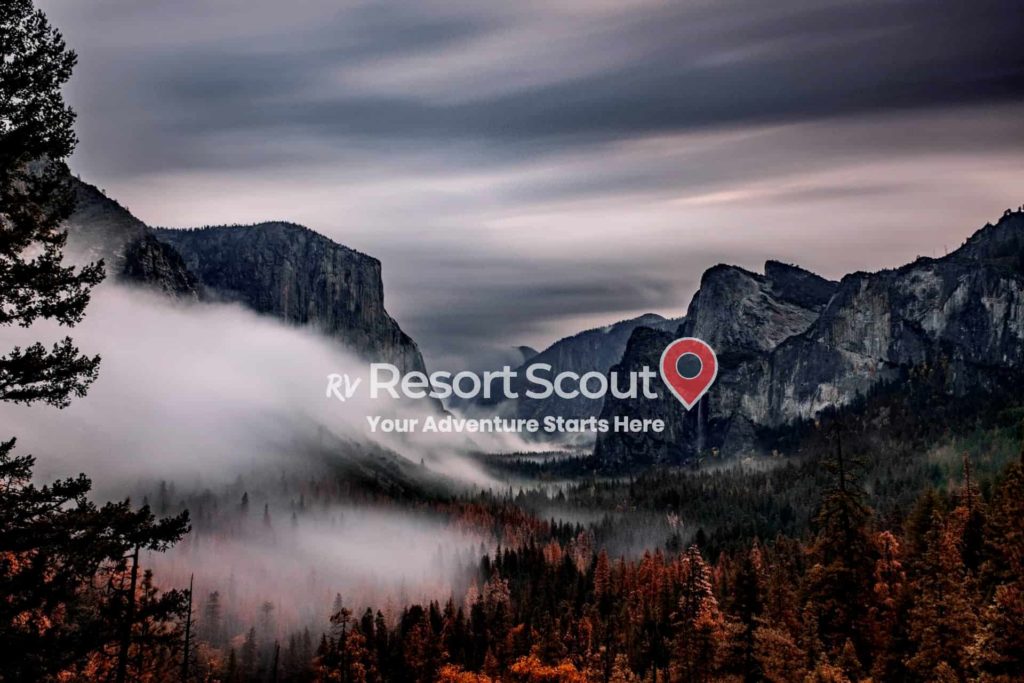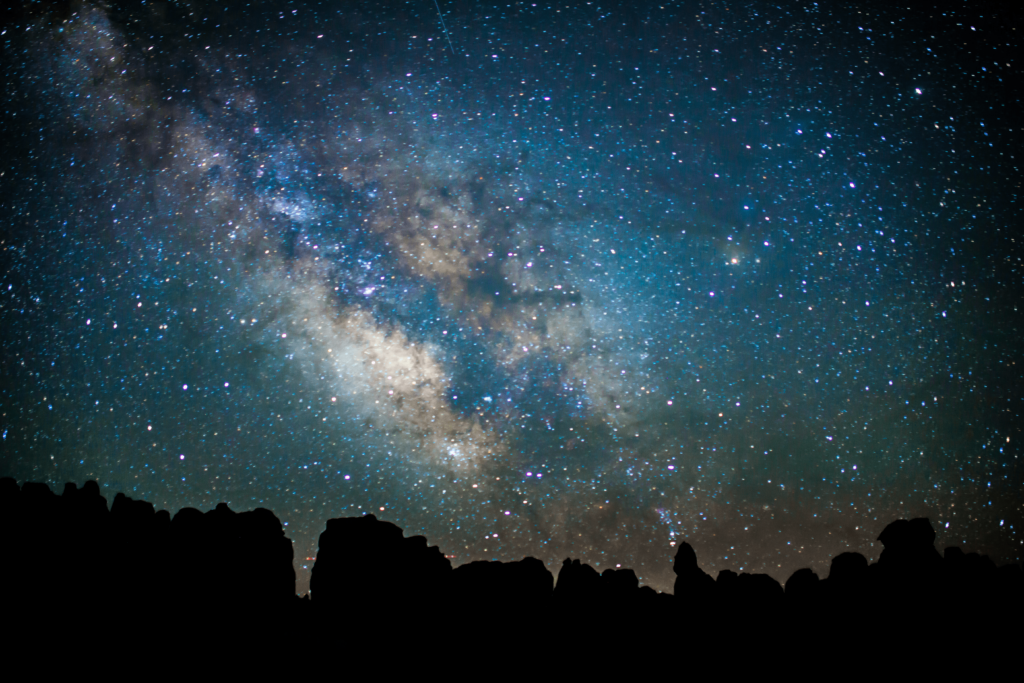The Ultimate Guide: Canyonlands National Park Utah

Canyonlands National Park Utah is a breathtaking natural wonder located in southeastern Utah. With its unique and diverse landscape of canyons, mesas, and buttes, the park offers visitors a chance to experience the beauty of nature in a protected and preserved setting. Whether you’re a seasoned hiker looking for a challenge, or a family looking for a scenic drive, the park has something to offer for everyone. In this article, we explore Canyonlands, give tips for getting orientated, and provide an overview of essential information to know before visiting. We’ll also highlight the best hikes, camping options, and nearby attractions. Join us as we dive into the wonders of Canyonlands.
For a condensed view of the park feel free to check out rvResortScouts Canyonlands National Park Information listing.
Park History / General Overview
Canyonlands has a rich and diverse history dating back to the Ancient Pueblo People who lived in the area over a thousand years ago. The park was established on September 12, 1964, and covers over 337,000 acres in southeastern Utah. The area was once home to the Ute, Paiute, and Navajo tribes before the arrival of European settlers in the 1800s.
The stunning natural features of Canyonlands National Park, including canyons, mesas, and buttes, formed over millions of years from erosion by the Colorado River and its tributaries. Early settlers, drawn to the area’s rich mineral resources and grazing lands, established mining and ranching communities.
Despite its rich history, the Canyonlands remained relatively unknown and isolated until the mid-20th century when the area began to attract visitors for its scenic beauty and recreational opportunities. Today, Canyonlands National Park is a popular destination for visitors from around the world, who come to enjoy its scenic beauty, unique geology, and rich cultural heritage.

Getting Oriented
Getting orientated in the park is important to make the most out of your visit. The park is divided into four main districts: Island in the Sky, The Needles, The Maze, and the Rivers. Each district offers a unique experience and is accessible by different roads.
Island in the Sky is the most easily accessible district and offers stunning views from mesa top overlooks. The northern part of the park houses the district accessible via State Route 313, while the southeast part, known for its spire-like rock formations, holds the Needles district and is accessible via State Route 211.
Furthermore, the Maze is the most remote and rugged district and is located in the western part of the park. The district is not accessible by car and requires a long hike or a 4-wheel drive vehicle to reach. The Rivers district is located along the Green and Colorado Rivers and offers opportunities for rafting and kayaking. It is accessed by roads leading from the west or south.
Before starting your visit, be sure to stop by the visitor center to get a map and learn about current road and trail conditions. Understanding the districts and the routes to access them will help ensure a successful and enjoyable visit to Canyonlands.
Canyonlands National Park Essentials
Visiting Canyonlands Utah requires some planning to ensure a safe and enjoyable trip. Here are some essentials you need to know before you go:
- Park Entrance Fee: There is a fee to enter the park. The fee covers a seven-day pass for your vehicle and all its occupants. You can purchase a pass at the park’s entrance stations or visitor center.
- Hours of Operation: The park is open 24 hours a day, but some roads and trails may close during the winter months due to snow or other weather conditions. Be sure to check the park’s website or stop by the visitor center for up-to-date information.
- Weather: Canyonlands National Park is located in a desert climate and temperatures can vary greatly from day to night. Be sure to bring plenty of water, wear appropriate clothing, and bring sunscreen. Check the weather forecast before your visit to prepare for the conditions.
- Food and Supplies: There is no food or supplies available for purchase within the park, so be sure to bring everything you need for your visit.
- Leave No Trace: Canyonlands is a protected area, and visitors are asked to follow Leave No Trace principles. This includes staying on designated trails, not disturbing wildlife, and properly disposing of all trash and waste.
- Cell Phone Service: Limited or no cell phone service may occur during your visit to Canyonlands National Park, so prepare for limited service.
Things You Need to Know
When visiting the Canyonlands, there are a few things you need to know to make the most out of your trip. Here’s what you need to keep in mind:
- What to Pack: Bring plenty of water, sunscreen, a hat, and sunglasses. Wear appropriate clothing for the weather, including layers for the cool nights. A backpack with a first-aid kit, map, and snacks is also recommended.
- Amount of Food Needed: There are no food or supply options within the park, so be sure to bring enough food and snacks for your entire trip. Plan for at least one meal per day per person.
- Hiking Gear: Good hiking shoes, a hat, and plenty of water are essential for any hike. Bring a map and compass or download a GPS app for your smartphone. Bring a first aid kit.
- Animals in the Area: Canyonlands National Park is home to many wildlife species, including deer, elk, and coyotes.
- Cost of Trip: The park entrance fee is $30 per vehicle, which covers a seven-day pass. Camping fees vary, so be sure to check the park’s website for the latest information.
- Family Activities: There are many activities for families, including scenic drives, easy hikes, and ranger-led programs. Check the park’s website for a schedule of activities and events.
- Conservation: Canyonlands National Park is a protected area, and visitors are asked to follow Leave No Trace principles. This includes staying on designated trails, not disturbing wildlife, and properly disposing of all trash and waste.
- RV Dos and Don’ts: RVs are welcome in Canyonlands, but be sure to check the park’s website for information on road and campsite access. RVs over 25 feet are not recommended for the park’s backcountry roads.
Best Hikes Within Canyonlands National Park Utah
The Canyonlands has some of the most beautiful and challenging hikes in the Southwest. Here are five of the best:
- Mesa Arch: This short, easy hike leads to a breathtaking view of the park’s mesa country. The arch frames the sunrise perfectly, making it a popular destination for photographers.
- Upheaval Dome: This strenuous hike takes visitors to a unique geological formation believed to be the result of a meteor impact. The hike includes a strenuous climb to the top, but the views are worth it.
- The Needles Overlook: This moderate hike takes visitors to a panoramic view of the park’s needle formations. The overlook provides a great view of the park’s rugged terrain and is a popular destination for sunset.
- Grand View Point Trail: This easy hike takes visitors to a panoramic view of the park’s maze country and the Colorado River. The trail is short, but the views are stunning.
- Chesler Park Loop: This strenuous hike takes visitors through a landscape of towering rock formations, deep canyons, and lush meadows. The loop is a long day hike, but it’s worth it for the stunning views and unique landscape.
Whether you’re a seasoned hiker or a beginner, Canyonlands has a hike for you. Be sure to check the park’s website for trail conditions and maps before heading out on your hike.
Accommodations Within Canyonlands National Park
Visitors to the Canyonlands have several options for accommodations, including:
- Campgrounds: The park has three developed campgrounds with a total of 84 campsites. All campgrounds have potable water and toilets, but no showers. Getting a reservation is basically a must-do. Campgrounds will fill up quickly, especially during peak season.
- RV Parks: There are several RV parks in the nearby town of Moab that offer full hook-up sites.
- Lodges: There are no lodges inside the park, but there are several in the nearby town of Moab.
- Backcountry Camping: Canyonlands National Park offers backcountry camping for those who want to experience the park’s rugged beauty. You must have a permit and be self-sufficient to backcountry camp.
Visitors, regardless of their accommodation choice, should prepare for the park’s unique conditions, including extreme temperatures and remote location. Be sure to check the park’s website for up-to-date information on accommodations and camping conditions.
Safety
Visiting Canyonlands National Park can be a safe and enjoyable experience, but visitors should be aware of the following safety tips:
- Water: Carry plenty of water and drink often, even if you don’t feel thirsty. Dehydration can set in quickly in the park’s hot, arid climate.
- Hiking: Wear appropriate footwear and bring a map, compass, and plenty of food and water on all hikes. Stay on designated trails and be aware of your surroundings.
- Weather: Canyonlands National Park can experience sudden and severe weather changes, including flash floods and lightning strikes. Before visiting, check the weather forecast and prepare for sudden changes.
- Animals: Canyonlands park is home to a variety of wildlife, including rattlesnakes and mountain lions. Keep a safe distance from all animals and never feed them.
- First Aid: Bring a basic first-aid kit and know how to use it. The park’s remote location means that emergency services may be far away.
- Respect Wildlife and Natural Resources: Do not disturb wildlife or damage the park’s fragile ecosystem. Stick to designated trails and pack out all trash.
What’s In The Surrounding Area
Canyonlands National Park is located in southeastern Utah and is surrounded by several other popular attractions. Here are a few highlights of what you can find in the surrounding area:
- Moab: The nearby town of Moab offers a range of services, including restaurants, shops, and hotels. Moab is also the gateway to Arches National Park and Dead Horse Point State Park.
- Arches National Park: Just a short drive from Canyonlands, Arches National Park is home to over 2,000 natural stone arches and other geological formations.
- Dead Horse Point State Park: Located just a few miles from Canyonlands, Dead Horse Point State Park offers stunning views of the surrounding canyons and mesas.
- La Sal Mountains: The La Sal Mountains are a popular destination for outdoor recreation, including hiking, camping, and mountain biking.
- Canyonlands Field Institute: The Canyonlands Field Institute offers guided tours and educational programs for visitors to Canyonlands and the surrounding area.
- Zion National Park: Explore one of Utahs most visited National Parks. It is a long drive over to Zion but it will be well worth the trip.
Canyonlands National Park Utah Wrap Up
The park is a unique and breathtaking destination that offers visitors a chance to explore the rugged beauty of southeastern Utah. From its towering mesas to its deep canyons, the park is a testament to the power of nature and the majesty of the American West. Whether you’re a seasoned hiker or just looking for a scenic drive, the Canyonlands are a must-visit destination for anyone looking to experience the beauty of the great outdoors. With its rich history, diverse landscapes, and numerous recreational opportunities, Canyonlands is sure to leave a lasting impression on all who visit. So pack your bags, grab your hiking gear, and head out to the Canyonlands for an unforgettable adventure!


